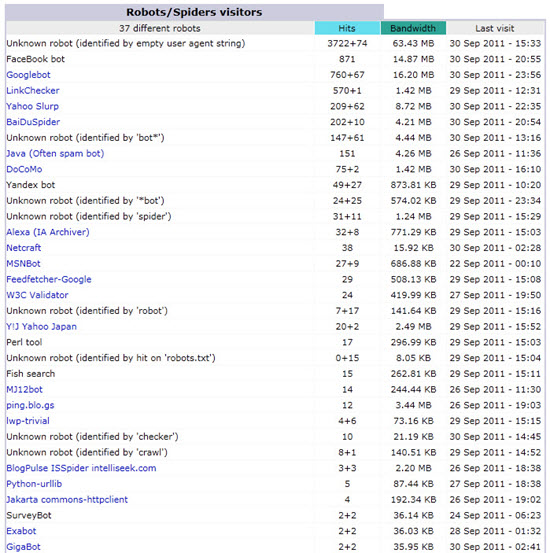
SSH at port 22) to a different port does nothing to make the server more secure. Many security professionals believe that changing the default ports of well-known services (e.g.
#Awstats export full#
If you want more detail, click the Full List link at the top of any summary section, or use the navigation at the left.The default port Webmin & Virtualmin listen to is port 10000. As you scroll down the page, you can also see traffic broken down by date, day of the week, hour of the day, country, referring host, top ten most popular files, operating system, and browser. Below that is a graph of the current year’s activity, comparing unique visitors, hits, and bandwidth used. The default AWStats view is a summary of the current month, with a summary of the month’s activity at the top of the page. To view your stats, open a browser window and enter the URL for the reports interface. When the process is complete, AWStats provides a report on how many records were processed, how many were dropped, corrupt, old, and finally, how many were added to the statistics database. Provided everything goes well, you’ll see some status text, detailing the build process. Make sure you have write permissions in the directories AWStats uses, or be sure to specify directories that you’re allowed to write to.Īfter you’ve successfully installed AWStats, I recommend that you do your first "build" from the command line, because if anything goes wrong errors are sent to the command line.

You need to specify where your log files are located and specify a name for your configuration file.
#Awstats export install#
There’s an install script that walks you through the process. However, if you’re just interested in which of your files are most popular in terms of number of views and amount of data sent, it’s a good solution.ĪWStats runs on just about any OS you choose, provided it supports Perl 5.00503 or better. It only offers a minimal set of streaming stats because it’s primarily designed for web-server log processing. As it turns out, there are only a few viable options available at this point, and we'll look at two that are at opposite ends of the spectrum: AWStats and Sawmill.ĪWStats is an open source log-processing solution that can be configured to analyze streaming stats. Given the number of streaming media providers out there, you’d think that there would be a big market for this kind of software. Thankfully, this is the sort of thing that computers are good at-boring, repetitive tasks involving a little math. To figure this out, you need to divide the number of bytes delivered by the encoding bit rate, which may or may not be recorded in another log entry field.Īdditionally, what you’ll want to do is export this information to a spreadsheet format so you can compare it to other metrics you may have, as well as create graphs and charts so you can track trends over time. But on a file-by-file basis, it’s more useful to know what percentage of the file people watched. This is useful as an aggregate number to know exactly how much bandwidth you’re using. For example, all log files record how much data was sent. Each log entry must be tallied, and some of the data may need to be manipulated to be useful. The challenge is to extract this information and present it in a useful format. Depending on what streaming format you’re using, you’ll have lots of other data that can be mined for more information. A typical log file entry contains the date and time of the request, the IP address of the viewer, the name of the file requested, and how much of the file was sent. Each entry is a single line of text, containing multiple fields, each of which contains information about the transaction. Every time a request is processed by your streaming server, an entry is written in the log file.

To understand this, you have to extract as much information as possible out of your log files.Įxtracting information out of your log files isn’t rocket science.

In fact, your existence is probably intimately tied to how well your system is working. No matter how large or small your streaming media infrastructure is, it’s critical to know how it’s performing. Analyzing Streaming Media Server Log Files


 0 kommentar(er)
0 kommentar(er)
